Human papillomavirus 16 18. Understanding HPV 16 and 18: A Comprehensive Guide
What are HPV 16 and 18? Learn about these high-risk types of human papillomavirus and their impact on cancer risk. Discover the importance of regular screening and prevention measures.
Understanding the Basics of HPV
Human papillomavirus (HPV) is a very common virus that infects nearly everyone at some point in their lives. There are over 150 different strains of the virus, each identified by a number. HPV 16 and 18 are two high-risk types that are known to significantly increase the risk of cervical, vaginal, vulvar, anal, and throat cancers in both men and women.
The Prevalence of HPV Infections
According to the Centers for Disease Control and Prevention (CDC), more than 40 of the 150 or so types of HPV can infect the genital regions and other mucous membranes, such as the mouth and throat. However, only some of these HPV types are known to cause cancer, including 13 different types that are linked to cervical cancer.
The CDC estimates that in 2018, about 43 million Americans had a form of HPV that can cause a sexually transmitted disease, and about 13 million Americans became newly infected that year. HPV is the most commonly diagnosed sexually transmitted disease in the United States and abroad.
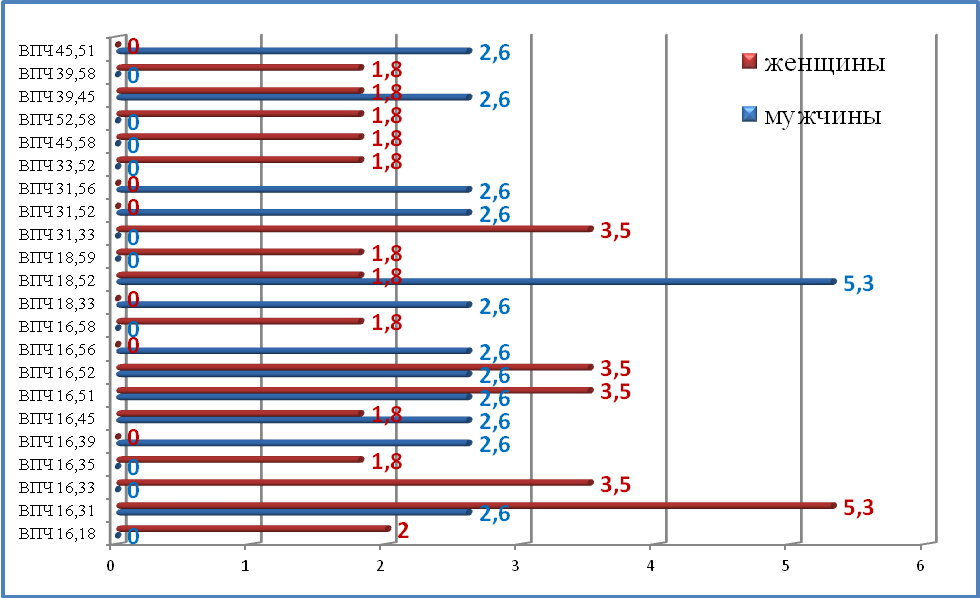
Understanding the Risks of HPV 16 and 18
HPV 16 and 18 are considered high-risk types because they are known to significantly increase the risk of developing certain types of cancer. If the HPV infection persists, these high-risk types can lead to the development of genital, anal, or oral cancer, depending on the location of the infection.
It’s important to note that even in people whose HPV persists, the time from infection with a high-risk HPV type to the development of cancer is generally measured in years. This slow growth allows for the detection of precancerous changes in the cervical cells, known as dysplasia, through regular screening tests like Pap tests and HPV tests.
Screening and Early Detection
Regular screening is crucial for the early detection of precancerous changes. For women, Pap tests and HPV tests can detect high-risk types of HPV in the cells of the cervix. Currently, there are no recommended screening tests for HPV-related precancerous changes in other areas of the body, such as the anus, but some medical societies recommend annual screening with an anal Pap test for certain adults with HIV.

If a woman tests positive for HPV 16 or 18, it doesn’t necessarily mean she will develop cervical cancer, but it does indicate a higher risk of the precancerous changes found in a Pap test becoming cancerous. In these cases, the doctor can develop a plan to either treat the dysplasia or conduct further testing to rule out the development of cancer.
Misconceptions and Awareness
Despite the prevalence of HPV, it is often misunderstood by patients. Many believe that a positive test for high-risk HPV is similar to other sexually transmitted diseases, such as chlamydia or herpes. However, HPV is much more common, and almost everyone who has had sexual contact will have had HPV at some point.
As ob-gyn Jane Oh explains, “The only people who won’t have HPV are those who have never had sexual contact with anyone or someone who has had sexual contact with one partner who also has never had sexual contact with anyone else.” This highlights the need for greater awareness and understanding of the true nature of HPV infections.

Importance of Prevention and Vaccination
While HPV infections are common, there are effective prevention and vaccination measures available. The CDC and the American College of Obstetricians and Gynecologists (ACOG) recommend regular screening for women, including Pap tests and HPV tests, to detect precancerous changes early.
Additionally, there are HPV vaccines available that can protect against the high-risk types 16 and 18, as well as several other HPV types. These vaccines are recommended for both boys and girls, as they can help reduce the risk of developing HPV-related cancers in the future.
Conclusion
HPV 16 and 18 are two high-risk types of the human papillomavirus that can significantly increase the risk of various types of cancer, including cervical, vaginal, vulvar, anal, and throat cancers. Understanding the prevalence, risks, and prevention measures related to these HPV types is crucial for maintaining good health and reducing the burden of HPV-related cancers.
What Are HPV 16 and 18?
By Cathy CassataMedically Reviewed by Jane Yoon Scott, MD
Reviewed:
Medically Reviewed
Women can lower their risk of cervical cancer by getting screened regularly with either Pap tests or cervical HPV tests.Adobe Stock
HPV is short for human papillomavirus, a very common virus that infects nearly everyone at some point.
There are many different strains of the virus, each identified with a number. HPV 16 and 18 are high-risk types known to significantly increase the risk of cervical, vaginal, and vulvar cancer in women, as well as penile cancer in men. The strains can also cause anal cancer and throat cancers in men and women.
More than 40 of the 150 or so types of HPV can infect the genital regions and other mucous membranes (such as the mouth and throat), but only some of these HPV types are known to cause cancer, according to the Centers for Disease Control and Prevention (CDC). That includes 13 different HPV types known to cause cervical cancer.
That includes 13 different HPV types known to cause cervical cancer.
In most people, HPV infections are eventually cleared by the body, as the infected cells are shed naturally. In a minority of people, though, the HPV infection persists, and if the persistent HPV is type 16 or 18, there is a marked increase in the risk of developing genital, anal, or oral cancer (depending on where the infection is located).
But even in people whose HPV persists, the time from infection with a high-risk HPV type to the development of cancer is generally measured in years.
For women, such slow growth allows precancerous changes in the cervical cells, called dysplasia, to be found on screening tests known as Pap tests — or, more recently, HPV tests can detect high-risk types of HPV in the cells of the cervix.
Currently, no screening tests for HPV-related precancerous changes in other areas of the body are recommended by the CDC. But some medical societies recommend annual screening with an anal Pap test for certain adults with HIV, to screen for changes that may lead to anal cancer.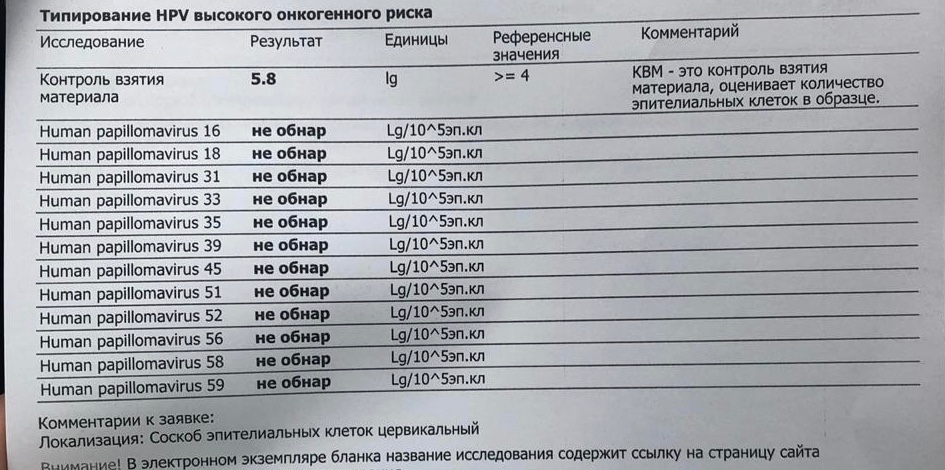 You don’t need to have anal sex to have anal exposure to HPV, since the virus can spread from the genital region to the anus.
You don’t need to have anal sex to have anal exposure to HPV, since the virus can spread from the genital region to the anus.
HPV Is Common, Yet Commonly Misunderstood
HPV is the most commonly diagnosed sexually transmitted disease (STD) in the United States and abroad. The CDC estimates that in 2018, about 43 million Americans had a form of HPV that can cause a sexually transmitted disease, and about 13 million Americans became newly infected that year.
HPV also causes common skin warts, which are not considered STDs.
But even though it’s very common, HPV is widely misunderstood.
“The most common misconception that my patients have when they get a positive test for high-risk HPV is that this is an STD similar to chlamydia or herpes,” says Jane Oh, MD, an ob-gyn (obstetrician-gynecologist) in private practice Arlington Heights, Illinois.
While HPV is sexually transmitted, Dr. Oh says, almost everyone who has had sex will have HPV at one time or another.
“The only people who won’t have HPV are those who have never had sexual contact with anyone or someone who has had sexual contact with one partner who also has never had sexual contact with anyone else,” Oh adds.
How Will I Know if I Have Cervical HPV?
Even though HPV is common, many women will never know they’ve contracted it, since HPV-infected cells are often shed from the cervix with no intervention.
This is particularly true in women under 30 years old.
“Many times, when women acquire HPV at a young age, there is a high clearance rate, and they tend to clear it on their own without any need for procedures like colposcopies, which we used to perform a lot in the early 2000s,” says Salena Zanotti, MD, an ob-gyn at the Cleveland Clinic in Avon, Ohio. “This is because our immune systems are definitely more active the younger we are.”
A colposcopy is a procedure in which a magnifying instrument and bright light are used to examine the cervix.
Because of the lower risk that HPV poses for very young women, the CDC and the American College of Obstetricians and Gynecologists (ACOG) recommend that women ages 21 to 29 have a Pap test every three years, with the option to substitute a HPV test every five years in those ages 25 to 29.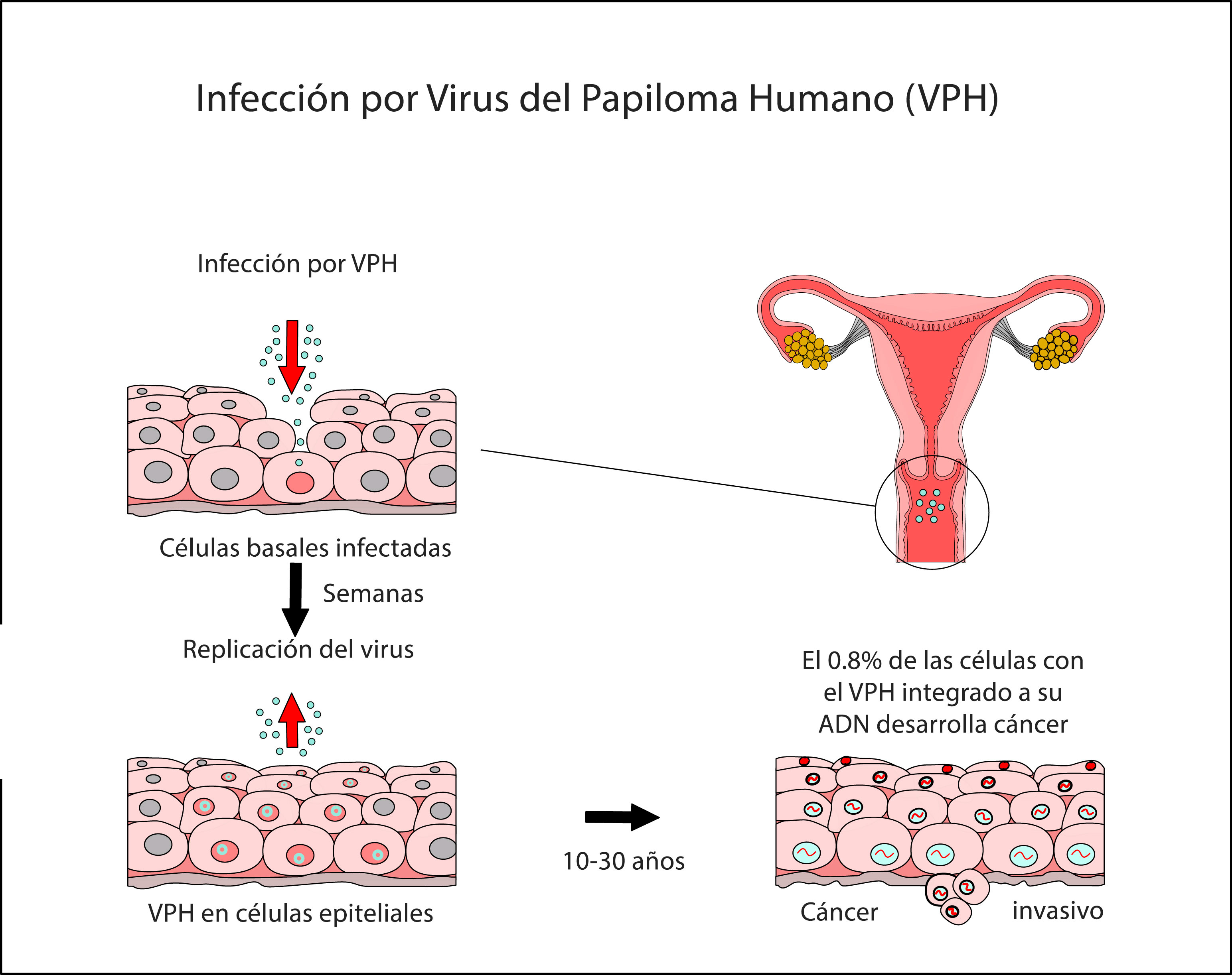
If a woman has a history of normal Pap tests and doesn’t have certain risk factors (such as a compromised immune system), ACOG says she should have one of the following starting at age 30 until age 65:
- A Pap test every three years
- A Pap test and HPV test together every five years
- Just an HPV test every five years
What if I Test Positive for HPV 16 or 18 of the Cervix?
Testing positive for HPV 16 or 18 doesn’t mean you’ll develop cervical cancer, but it does mean that any dysplasia found in a Pap test carries a higher risk of becoming a cancer.
Based on the results of your Pap test and HPV test, your doctor can develop a plan to either treat the dysplasia, do more testing to rule out cancer, or recommend more frequent follow-up visits to look for additional changes.
“Paps of the cervix have been tested for a long time, and we know the changes HPV causes in the cervix,” notes Dr. Zanotti — meaning that doctors can often tell which changes to the cervix pose the most immediate danger.
If you get diagnosed with HPV, and everything else tests okay, then most likely the HPV will clear on its own within one to two years, if you don’t have a suppressed immune system.
What About Screening for Anal HPV?
If you’re concerned about anal HPV infection, you may find that there isn’t any consistent guidance about potential testing. Oh notes that HPV doesn’t cause the same changes in the anus as it does in the cervix, so a Pap test is not likely to be an effective test for most people.
If you’re considered to be at higher risk for anal HPV because you have HIV or another medical condition, your doctor may refer you to someone who performs anal cytology testing (also called the anal Pap test), anoscopies (using a scope to view the anus and rectum), or high-resolution anoscopies, which use a high-resolution magnifying instrument to identify abnormal cells.
Rise in HPV 16–Related Throat Cancer
For years, heavy tobacco and alcohol use were the main known risk factors for developing cancer of the oropharynx — the back of the throat, including the base of the tongue and the tonsils.
Today, HPV is the primary cause of oropharyngeal cancer around the world.
In the United States, HPV is thought to cause 70 percent of all oropharyngeal cancers, with HPV 16 the culprit in about 95 percent of these cases, according to Yale Medicine.
Both oral HPV infection and HPV-related oropharyngeal cancer are much more common among men than women. About 10 percent of American men have oral HPV, compared with 3.6 percent of women, according to the CDC.
In addition, oral HPV 16 infection is 6 times more common in men than in women ages 18 to 69, according to a report published in November 2017 in the journal Annals of Internal Medicine. The report also found the following:
- The overall prevalence of oral HPV infection was 11.5 percent in men and 3.2 percent in women.
- High-risk oral HPV infection was more prevalent among men than women, 7.3 percent compared with 1.4 percent.
- Among men who reported having two or more same-sex oral sex partners, the prevalence of high-risk oral HPV infection was 22.
 2 percent.
2 percent. - Oral HPV prevalence was more than four times as high in men who also had genital HPV infection (19.3 percent) than in men without genital HPV (4.4 percent).
The good news is that oropharyngeal cancer caused by HPV has a much higher five-year survival rate after treatment than head and neck cancers not associated with HPV, according to Mount Sinai.
Does the HPV Vaccine Protect Against Types 16 and 18?
The HPV vaccine, Gardasil 9, protects against HPV 16 and 18, as well as several other cancer-causing types of HPV and the two main types that cause genital warts.
The CDC recommends that all adolescents get the HPV vaccine at age 11 or 12. It’s also recommended through age 26 for anyone who wasn’t fully vaccinated at a younger age.
The HPV vaccine is also an option for adults ages 27 to 45 who didn’t receive it earlier, in which case you should talk with your healthcare provider about whether it makes sense for you.
Zanotti notes that some parents may be hesitant to give their child the HPV vaccine because HPV is associated with sexual activity.
“I tell my patients, ‘If you vaccinated your child against measles, mumps, and rubella, they’re more likely to get HPV than they are to get rubella these days, and HPV is something that causes cancer.’ It’s pretty clear-cut. If you can do something to prevent the cancer, why wouldn’t you?” Zanotti says.
Zanotti adds that while more parents are getting their sons vaccinated against HPV, this still isn’t as common as vaccination in girls. “But if in the next 10 years, boys get the vaccine as often, we will see the amount of HPV going down significantly,” she predicts.
Still, Oh cautions that the HPV vaccine doesn’t do away with the need for safer sexual practices.
“Everyone needs to know that the HPV vaccine is not a foolproof method of preventing all cervical cancer,” Oh says. “We still need to protect ourselves. Use condoms, limit partners, support our immune systems, and get those Pap [tests] to prevent cervical cancer.”
Additional reporting by Quinn Phillips.
Editorial Sources and Fact-Checking
- Basic Information About HPV and Cancer. Centers for Disease Control and Prevention. December 13, 2021.
- Human Papillomavirus (HPV) Test. Testing.com.
- Human Papillomavirus (HPV). Centers for Disease Control and Prevention. April 12, 2022.
- Cervical Cancer. Centers for Disease Control and Prevention. December 14, 2021.
- Updated Cervical Cancer Screening Guidelines. American College of Obstetricians and Gynecologists. April 2021.
- Can Anal Cancer Be Found Early? American Cancer Society. September 9, 2020.
- Moriarty C. Throat Cancers Are on the Rise: Why This Matters to You. Yale Medicine. March 5, 2020.
- HPV and Oropharyngeal Cancer. Centers for Disease Control and Prevention. December 13, 2021.
- Sonawane K, Suk R, Chiao E, et al. Oral Human Papillomavirus Infection: Differences in Prevalence Between Sexes and Concordance With Genital Human Papillomavirus Infection, NHANES 2011 to 2014.
 Annals of Internal Medicine. November 21, 2017.
Annals of Internal Medicine. November 21, 2017. - Human HPV and Throat/Oral Cancer Frequently Asked Questions. Mount Sinai.
Show Less
By subscribing you agree to the Terms of Use and Privacy Policy.
The Latest in HPV
HPV Vaccine Offers Cancer and Genital Wart Prevention
The HPV vaccine is safe and effective, providing nearly 100 percent protection against genital warts and the major causes of HPV-associated cancers.
By Joseph Bennington-Castro
HPV in Women: The Leading Cause of Cervical Cancer
HPV causes the vast majority of cervical cancers. For anyone with a cervix, regular Pap tests or HPV tests reduces the risk of cervical cancer.
By Joseph Bennington-Castro
HPV in Men: Oral Cancer a Growing Concern
Oropharyngeal cancer linked to HPV infection is on the rise, especially among men. Learn why, and how it can be prevented.
Learn why, and how it can be prevented.
By Joseph Bennington-Castro
HPV Treatment: Warts, Genital Warts, Cervical Dysplasia
Human papillomavirus (HPV) is not curable, but the warts, genital warts, and precancerous cell changes it can cause are treatable. Learn how.
By Joseph Bennington-Castro
What Is HPV? Symptoms, Causes, Diagnosis, Treatment, and Prevention
Human papillomavirus (HPV) may be best known for causing genital warts and cervical, anal, and oropharyngeal cancers, but many types of HPV also cause…
By Joseph Bennington-Castro
HPV Symptoms and Diagnosis
Different HPV types can cause common skin warts, genital warts, or precancerous cell changes. But most HPV infections cause no symptoms at all.
By Joseph Bennington-Castro
7 Common Myths About HPV
HPV is the most common sexually transmitted infection in America, yet many people aren’t sure what it is, how you get it, and what effects it can have. ..
..
By Nancie George
8 Ways to Prevent HPV or Detect It Early
Getting the HPV vaccine is the best way to prevent genital warts and cancers caused by the virus. But there’s more you can do to avoid HPV.
By Beth W. Orenstein
HPV: A Viral Link to Cancer
Cancers of the cervix, vagina, anus, and oral cavity have been linked to human papillomavirus (HPV), a very common sexually transmitted virus. What are…
By Tammy Worth
HPV and Cancer | Human Papillomavirus and Cancer
What is HPV?
HPV is short for human papillomavirus. HPVs are a large group of related viruses. Each virus in the group is given a number, which is called an HPV type.
Most HPV types cause warts on the skin, such as on the arms, chest, hands, or feet.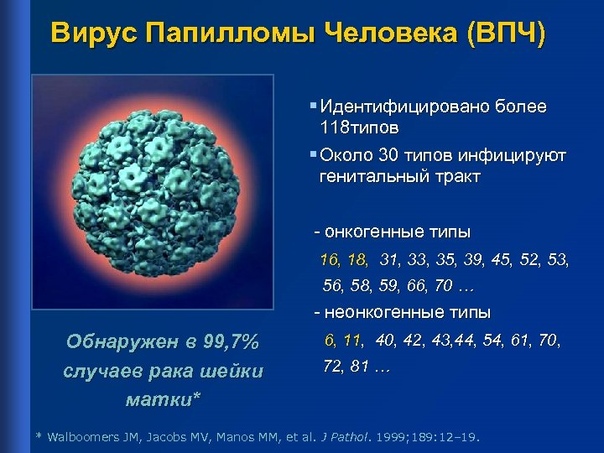 Other types are found mainly on the body’s mucous membranes. Mucous membranes are the moist surface layers that line organs and parts of the body that open to the outside, such as the vagina, anus, mouth, and throat. The HPV types found on mucous membranes are sometimes called genital HPV. They generally do not live on the skin.
Other types are found mainly on the body’s mucous membranes. Mucous membranes are the moist surface layers that line organs and parts of the body that open to the outside, such as the vagina, anus, mouth, and throat. The HPV types found on mucous membranes are sometimes called genital HPV. They generally do not live on the skin.
Genital HPV is not the same as HIV or herpes. HPV is divided into 2 main groups:
Low-risk HPV types
Some types of HPV can cause warts (papillomas) on or around the genitals and anus of both men and women. Women may also have warts on the cervix and in the vagina. Because these HPV types rarely cause cancer, they are called “low-risk” viruses.
High-risk HPV types
Other types of HPV are called “high-risk” because they can cause cancer. Doctors worry more about the cell changes and pre-cancers linked to these types, because they’re more likely to grow into cancers over time. Common high-risk HPV types include HPV 16 and 18.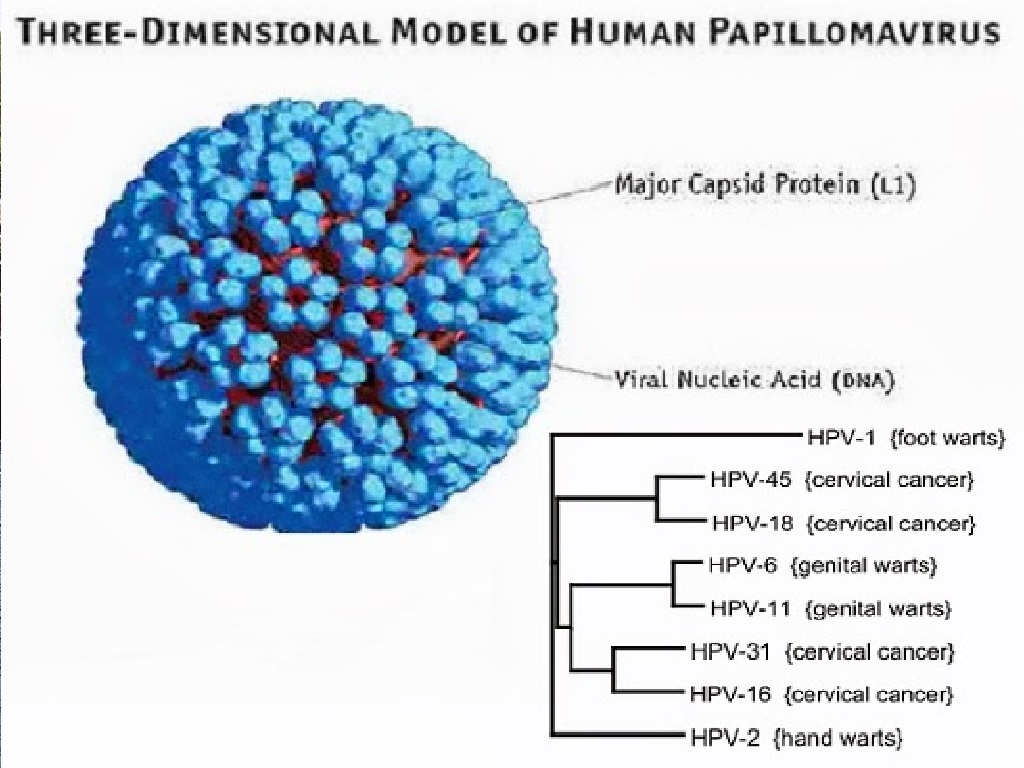
Infection with HPV is very common. In most people, the body is able to clear the infection on its own. But sometimes, the infection doesn’t go away. Chronic, or long-lasting infection, especially when it’s caused by certain high-risk HPV types, can cause cancer over time.
How do people get HPV?
HPV can be passed from one person to another by skin-to-skin contact, such as occurs with sexual activity. The main way HPV is spread is through sexual activity, including vaginal, anal, and oral sex. HPV can be spread even when an infected person has no visible signs or symptoms.
The virus can also be spread by genital contact without sex, although this is not common.
HPV infection is very common. Most men and women who have ever had sex get at least one type of genital HPV at some time in their lives. Anyone who has had sex can get HPV, even if it was only with only one person, but infections are more likely in people who have had many sex partners. Even if a person delays sexual activity until marriage, or only has one partner, they are still at risk of HPV infection if their partner has been exposed.
You cannot get HPV from:
- Toilet seats
- Hugging or holding hands
- Swimming pools or hot tubs
- Sharing food or utensils
- Being unclean
You can have HPV:
- Even if it has been years since you were sexually active
- Even if you do not have any signs or symptoms
To learn more about any of the cancers listed here, visit our website at www.cancer.org or call our toll-free number, 1-800-227-2345.
Cervical cancer
Cervical cancer is the most common cancer linked to HPV in people with a cervix. Nearly all cervical cancers are caused by HPV.
Cervical cancer can be found early and even prevented with routine screening tests. The Pap test looks for changes in cervical cells caused by HPV infection. The HPV test looks for the infection itself.
Cervical cancer is preventable with vaccines and regular screening tests. More than half of the people in the United States who get cervical cancer have never had or rarely had screening tests.
Vulvar cancer
HPV can also cause cancer of the vulva, which is the outer part of the female genital organs. This cancer is much less common than cervical cancer.
There’s no standard screening test for this cancer other than routine physical exams.
Vaginal cancer
Most vaginal cancers contain HPV.
Many vaginal pre-cancers also contain HPV, and these changes may be present for years before turning into cancer. These pre-cancers can sometimes be found with the same Pap test that’s used to test for cervical cancer and pre-cancer. If a pre-cancer is found, it can be treated, stopping cancer before it really starts.
Penile cancer
In men, HPV can cause cancer of the penis. It’s more common in men with HIV and those who have sex with other men.
There’s no standard screening test to find early signs of penile cancer. Because almost all penile cancers start under the foreskin of the penis, they may be noticed early in the course of the disease.
Anal cancer
HPV can cause cancer of the anus in both men and women. It’s more common in people with HIV and in men who have sex with other men.
Screening tests for anal cancer are not routinely recommended for all people. Still, some experts recommend anal cytology testing (also called an anal Pap test because it’s much like the Pap test used for cervical cancer) for people at higher risk of anal cancer. This includes men who have sex with men, individuals who have had cervical cancer or vulvar cancer, anyone who is HIV-positive, and anyone who has had an organ transplant.
Mouth and throat cancer
HPV is found in some mouth and throat cancers. Most cancers found in the back of the throat, including the base of the tongue and tonsils, are HPV-related. These are the most common HPV-related cancers in men.
These are the most common HPV-related cancers in men.
There’s no standard screening test to find these cancers early. Still, many can be found early during routine exams by a dentist, doctor, dental hygienist, or by self-exam.
Can HPV infection be prevented?
There’s no sure way to prevent infection with all the different types of HPV. But there are things you can do to lower your chances of being infected. There are also vaccines that can be used to protect young people from the HPV types most closely linked to cancer and genital warts.
HPV is passed from one person to another during contact with an infected part of the body. Although HPV can be spread during sexual contact – including vaginal, anal, and oral sex – sex isn’t the only way for the infection to spread. All that’s needed is skin-to-skin contact with an area of the body infected with HPV. There may be other ways to become infected with HPV that aren’t yet clear.
HPV can be present for years without causing any symptoms. It doesn’t always cause warts or any other symptoms. Someone can have the virus and pass it on without knowing it.
It doesn’t always cause warts or any other symptoms. Someone can have the virus and pass it on without knowing it.
Condom use
Condoms (“rubbers”) provide some protection against HPV, but they do not completely prevent infection.
Condoms must be used correctly every time sex occurs. Even then, condoms can’t protect completely because they don’t cover every possible HPV-infected area of the body, such as the skin on the genital or anal area. Still, condoms do provide some protection against HPV, and they also help protect against some other sexually transmitted infections.
A new condom should be used with each sex act. The condom should be put on BEFORE any genital, oral, or anal contact and kept on until sex is finished.
Limiting sex partners
If you are sexually active, limiting the number of sex partners and avoiding sex with people who have had many other sex partners can help lower your risk of exposure to genital HPV. But again, HPV is very common, so having sex with even one other person can put you at risk.
But again, HPV is very common, so having sex with even one other person can put you at risk.
HPV vaccines
HPV vaccines can prevent infection with certain types of HPV, including types that are linked to HPV-related cancers, as well as types linked to anal and genital warts.
Vaccines are approved for use in males and females. They can only be used to prevent HPV infection – they don’t help treat an existing infection.
- To work best, the HPV vaccines should be given between the ages of 9 and12.
- Teens and young adults ages 13 through 26 years who have not been vaccinated or who have not received all of their shots should get the vaccine as soon as possible. Vaccination of young adults will not prevent as many cancers as vaccination of children and teens.
- The ACS does not recommend HPV vaccination for persons older than 26 years.
Contact your American Cancer Society for more on the HPV vaccines.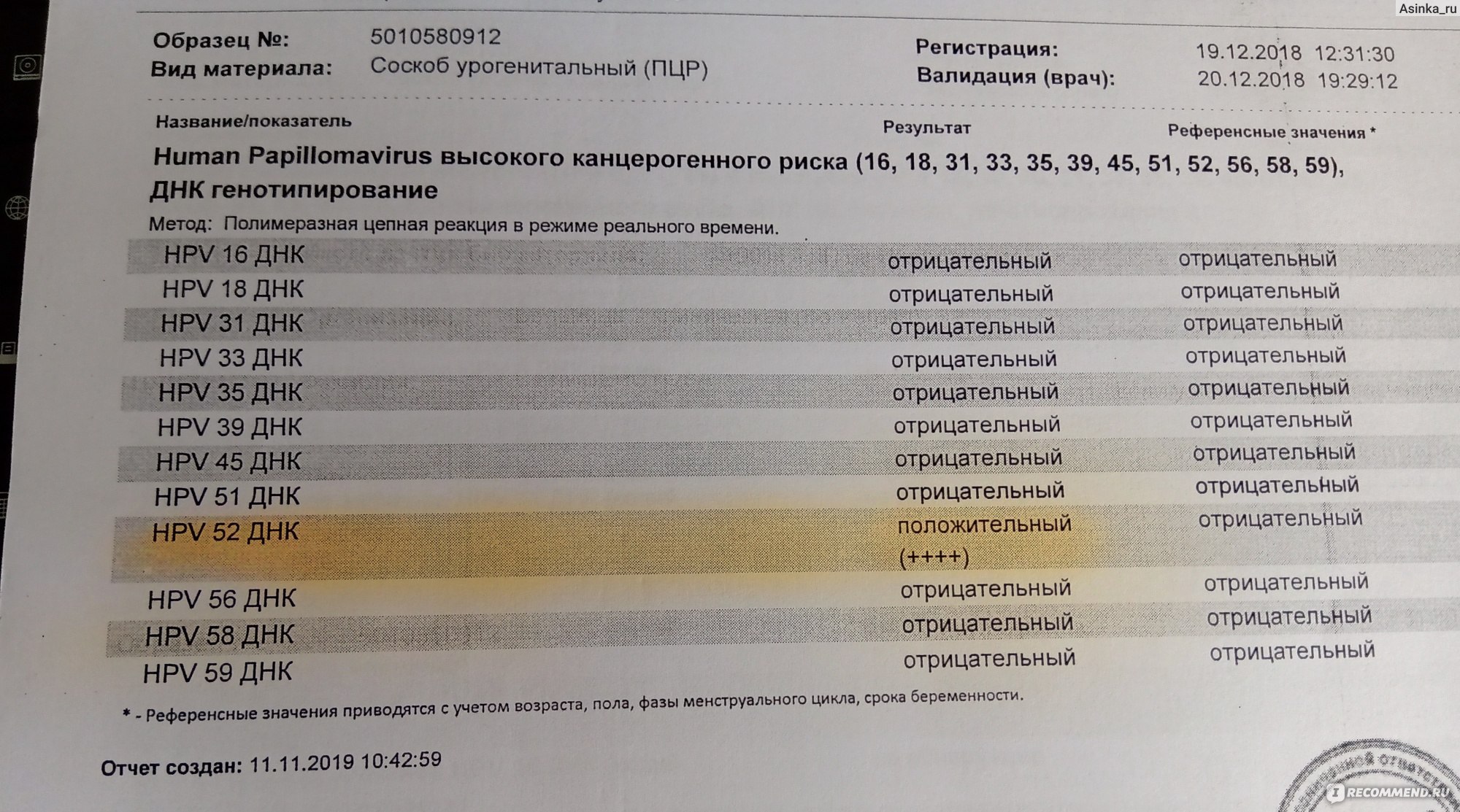
Testing for HPV
The HPV tests on the market are only approved to find HPV infection in individuals with a cervix. They can be used alone or as part of a co-test (when an HPV test and a Pap test are done at the same time) to determine your risk of developing cervical cancer.
- There’s no approved HPV test to find HPV on the penis or vulva, or in the anus, mouth, or throat.
- There’s no test for men or women to check one’s overall “HPV status.”
- For cervical cancer screening, the American Cancer Society recommends that people ages 25 to 65 get a primary HPV test* every 5 years. Because a primary HPV test may not be an option everywhere, a co-test every 5 years or a Pap test every 3 years are still good options.
(*A primary HPV test is an HPV test that is done by itself for screening. The US Food and Drug Administration has approved certain tests to be primary HPV tests.)
There’s no treatment for the virus itself, but there are treatments for the cell changes that HPV can cause.
Cancer is easiest to treat when it’s found early – while it’s small and before it has spread. Some cancer screening tests can find early cell changes caused by HPV, and these changes can be treated before they even become cancer.
Visible genital warts can be removed with prescribed medicines. They can also be treated by a health care provider.
Things to remember about HPV
- HPV is a very common virus. Most men and women who have ever had sexual contact will get HPV at some time in their lives.
- There is no treatment for HPV, but in most cases it goes away without treatment.
- Having HPV does not mean you will get cancer. Most of the time HPV goes away by itself.
- Certain people are at higher risk for HPV-related health problems. This includes gay and bisexual men and people with weak immune systems (including those who have HIV/AIDS).
- Most HPV infections that lead to cancer can be prevented with vaccines.

- Most cervical cancers can be prevented by regular screening.
prices, get tested in Moscow near you at the DNAOM laboratory
Human papillomavirus 16/18 type, HPV 16/18 – qualitative detection of human papillomavirus of high oncogenic risk in the scraping of the urogenital tract, by polymerase chain reaction with detection in “real time” mode.
PCR method with real-time detection of results, allows you to determine the amount of DNA of clinically significant types of HPV in the sample.
Human papillomavirus (HPV) is a widespread infectious disease of the genitourinary organs that can cause cervical cancer in women and squamous cell carcinoma in men.
Various types of HPV cause the development of:
- cervical, vulval, vaginal cervical dysplasia;
- preinvasive and invasive cervical, vaginal and perianal cancers;
- genital warts, urinary tract;
- genital warts.

Routes of infection
The main route of transmission of HPV is sexual, but cases of household transmission of the infection have been described. Women and men are infected with the same frequency. Approximately 70% of those examined, HPV is detected in both sexual partners. Possible intrauterine infection.
According to some researchers, the frequency of infection with the virus is directly proportional to the number of sexual partners: in the presence of one partner, HPV is detected in 17-20% of women, in the presence of 5 or more partners – in 70-80%.
Incubation period
The duration of the incubation period can last from 2 months to 2-10 years. HPV is characterized by a latent course of the disease, in which there are no clinical manifestations and no changes are detected during colposcopic, cytological and histological examination. In 30% of cases, the virus can be cleared within 6-12 months. Diagnosis of latent HPV infection is carried out only by PCR.
Clinical manifestations
HPV can affect the epithelium in different ways: promote the emergence of benign formations (papillomas, condylomas) or combine papillomavirus DNA with the cell gene, which leads to dysplasia and neoplasia, and later to cancer. The most common area of cancer localization is the transition zone of the cervix into the cervical canal.
Clinical forms of papillomavirus infection are found in 40-60% of men who are sexual partners of infected women. The lesions in them are caused by the same types of HPV as in women. In 2/3 of cases, there are characteristic rashes on the skin and mucous membranes of the genital organs.
Indications for testing:
- persons undergoing testing for other STIs;
- women with a burdened obstetric and gynecological history – manifestations of transforming dysplasia in varying degrees;
- clinically indicated men;
- immunosuppression;
- preventive screening tests.

With timely examination and proper treatment, the risk of high-risk HPV degeneration, including papillomavirus types 16, 18, into cancer can be minimized.
Men
Before taking a urogenital scraping, it is recommended to refrain from urinating for 1.5–2 hours.
Women
Scraping is not allowed on the days of menstruation. For two weeks, exclude the use of antibiotics, three days before taking – vaginal suppositories, tampons, spermicides. One day before the test, you should not have sexual intercourse. You can not douche on the eve of the examination. After ultrasound using a transvaginal probe, at least 48 hours must pass.
Interpretation of results
The format for issuing the result of HPV 16/18 type is detected / not detected.
Reasons for a positive result:
- the presence of HPV 16 and 18 genotypes in the test material, which is associated with a high risk of developing cervical cancer and other neoplasms of the anogenital region.

Reasons for negative result:
- absence of HPV genotypes 16 and 18 in the test material, which does not exclude the possibility of HPV infection of other genotypes.
What can influence the result?
- A false-negative result is possible if the material is taken and stored incorrectly, as well as if the virus content in the material is below the detectable level.
- A false-positive result may be due to contamination of the material.
Important notes
- HPV infection does not always lead to cervical cancer.
- Simultaneous infection with several HPV genotypes is possible.
- The result of the analysis should be interpreted taking into account the conclusions of the cytological and histological studies.
prices, get tested in Moscow near you at the DNAOM laboratory
HPV 16/18 type is a quantitative analysis that allows you to detect high oncogenic risk human papillomavirus in a sample and identify the viral load.
PCR method with real-time detection of results, allows you to determine the amount of DNA of clinically significant types of HPV in the sample.
Human papillomavirus (HPV) is a common urinary tract infection that can cause cervical cancer in women and squamous cell carcinoma in men.
Various types of HPV cause the development of:
- cervical, vulval, vaginal cervical dysplasia;
- preinvasive and invasive cervical, vaginal and perianal cancers; genital warts, urinary tract;
- genital warts.
Routes of infection
The main route of transmission of HPV is sexual, but cases of household transmission of the infection have been described. Women and men are infected with the same frequency. Approximately 70% of those examined, HPV is detected in both sexual partners. Possible intrauterine infection.
According to some researchers, the frequency of infection with the virus is directly proportional to the number of sexual partners: in the presence of one partner, HPV is detected in 17-20% of women, in the presence of 5 or more partners – in 70-80%.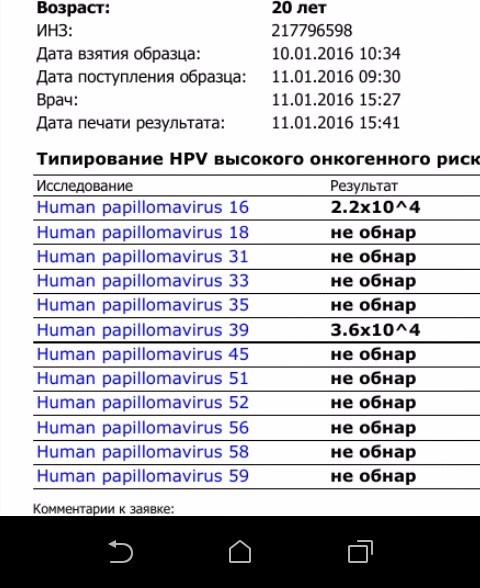
Incubation period
The duration of the incubation period can last from 2 months to 2-10 years. HPV is characterized by a latent course of the disease, in which there are no clinical manifestations, and a norm is revealed during colposcopic, cytological and histological examination. In 30% of cases, the virus can be cleared within 6-12 months. Diagnosis of latent HPV infection is carried out only by PCR.
Clinical manifestations
HPV can affect the epithelium in different ways: promote the emergence of benign formations (papillomas, condylomas) or combine papillomavirus DNA with the cell genome, which leads to dysplasia and neoplasia, and later to cancer. The most common area of cancer localization is the transition zone of the cervix into the cervical canal.
Clinical forms of papillomavirus infection are found in 40-60% of men who are sexual partners of infected women. The lesions in them are caused by the same types of HPV as in women. In 2/3 of cases, there are characteristic rashes on the skin and mucous membranes of the genital organs.
In 2/3 of cases, there are characteristic rashes on the skin and mucous membranes of the genital organs.
HPV can affect the epithelium in different ways: promote the emergence of benign formations (papillomas, condylomas) or the combination of papillomavirus DNA with the cell gene, which leads to dysplasia (neoplasia) and later to cancer (most often in the transitional zone of the cervix ).
Preparation
Women
It is not recommended to take biomaterial against the background of antibiotic therapy (general / local) and during menses, earlier than 24-48 hours after sexual contact, intravaginal ultrasound and colposcopy. It is recommended to take the material not earlier than 14 days after the use of antibacterial drugs and local antiseptics, and not earlier than 1 month after oral antibiotics.
Men
If a scraping from the urethra is taken for research, the collection of material is carried out before or not earlier than 2-3 hours after urination.

 2 percent.
2 percent. Annals of Internal Medicine. November 21, 2017.
Annals of Internal Medicine. November 21, 2017.


